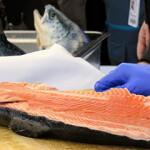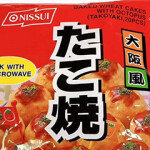Russia seeks more domestically produced fish feeds as demand increases

Russian start-ups and scientists are steaming ahead with efforts to replace imported fish feeds with local produced ones for the country’s growing aquaculture sector.
A surge in aquaculture production and the backing of fisheries authorities, have spurred on the move to boost the local aquafeed industry. Russian aquaculture has been on a steady rise since early the 2010s. Over the past 10 years, the amount of farmed fish produced doubled to 248,000 metric tons (MT) in 2019, up 22,000 MT from 2018, according to data from Russia’s Federal Agency for Fisheries. Long-term, it’s an even greater increase: in 2001, the level of production was 90,400 MT.
The figure is small compared with Russia’s annual wild catch of nearly 5 million MT. But Russian fisheries don’t catch all the species needed by Russian consumers in sufficient volumes.
Boosted by the Russian government’s backing of an effort to supply the domestic market with quality, affordable fish, investment has poured into aquaculture projects farming high-valued species as rainbow trout, Atlantic salmon, sturgeon, and more.
Part of the sector’s growth can be attributed Russia's 2014 move to ban food imports from a number of seafood-exporting countries, including Norway, over tensions related to Crimea.
Also factoring into the shift are currency issues. In late 2014, the Russian ruble strongly depreciated against the U.S. dollar and the euro. As the national currency became almost two times cheaper in comparison, imported fish and imported fish feeds became much more expensive.
In 2015, Russia’s Federal Agency for Fisheries head Ilya Shestakov brought notice that the needs of the country’s aquaculture sector was outstripping the domestic supply. Aquaculture operations were using 200,000 MT of feed a year, but domestic producers could only supply 110,000 MT. The rest was imported, mostly from Norway, Italy, and France.
Reliance on imports resulted in a distorted business model: While in Europe feed made up 25 to 35 percent of the cost for farming fish, in Russia it was 65 to 70 percent in 2015.
The picture has not changed much since then. A shift to domestic feed was impossible, due to the insufficient availability of quality Russian-manufactured products. Most Russian feeds at the time had low nutrition and poorly-balanced ingredients that negatively impacted fish growth. Among other problems cited by a report of Russia’s Ministry of Agriculture were wrong formulations, false ingredients, high friability, and low water resistance.
The national Strategy for Fishery Development 2030, adopted in 2019, envisages that by 2030 Russian will produce 600,000 MT of farmed seafood – primarily salmon, sturgeon, oysters, mussels, scallops, shrimp, and carp. Given that, demand for aquafeed is predicted to increase from 220,000 MT in 2016 to nearly 900,000 MT by 2030. This will translate to higher demand for fish oil and fish meal, the main ingredients in feed. It’s planned that 550,000 MT of fish oil and 200,000 MT of fish meal will be produced in 2030.
With the forecast for a huge rise in demand and the ongoing volatility of the Russian ruble, with a tendency to its gradual depreciation against the U.S. dollar and euro, savvy and deep-pocketed Russian investors have discovered the aquafeed industry has become a lucrative niche business. Federal and regional subsidies, a top-down push to slim down the bureaucracy surronding aquaculture project development, and the auctioning of newly available fish-farming sites through electronic auctions, have all contributed to a healthy growth of the sector in the past several years.
At the moment, multiple new projects are underway or about to start in Russia. The Crimea-based company Kolos, owned by investors involved in fishing business in the Republic of Abkhazia, is finishing the first phase of what will be a seafood plant in 2022 near the city of Kerch. The first phase to be completed this year, and will produce 2,000 MT of fishmeal a year out of 10,000 MT of local species – like Black Sea sprat, kilka, and the Black Sea anchovy.
The second phase will be the production of fish feeds, and the third phase will entail the production of grained fish oil. In its entirety, the project will cost RUB 1 billion (USD 13.7 million, EUR 11.5 million), with RUB 440 million (USD 6 million, EUR 5 million) earmarked for the first phase.
Kolos has said it intends to sell its fishmeal and fish feeds both domestically and as exports, the Expert South reported.
"The production volume of feeds will depend on the demand. At the moment, the demand is rather high," Kolos CEO Astamur Ashuba told the business magazine recently.
The Kolos plant is supported by The Crimea Development Corporation (CDC), a state-owned company in charge of finding and funding prospective investment ideas. CDC CEO Nayil Gabbasov said he believes Kolos' fishmeal will bring in high profits.
"There are few producers of this product in the country, and the competition is minimal," he told Expert South.
Yuzhno-Kurilsky Rybokombinat (The South Kuril Fish Plant), located on the island of Kunashir, near Japan, is also planning to start producing supplies of fishmeal and fish oil in 2020.
The Sakhalin government said in a press statement that the plant’s capacity will be 5,000 MT of fishmeal and 3,500 MT of fish oil a year.
“These two basic ingredients for the manufacturing of fish feeds for aquaculture are in high demand in the domestic market,” the government said.
The total investment in the product will be RUB 1 billion (USD 13.7 million, EUR 11.5 million), with the company’s committed investment totaling RUB 271 million (USD 3.7 million, EUR 3 million) and the remainder provided in the form of a loan by The Sakhalin Development Corporation.
One more large-scale project, worth RUB 1.3 billion (USD 17.7 million, EUR 14.82 million), is planned in the Astrakhan region.
Photo courtesy of Fabien Monteil/Shutterstock






Share